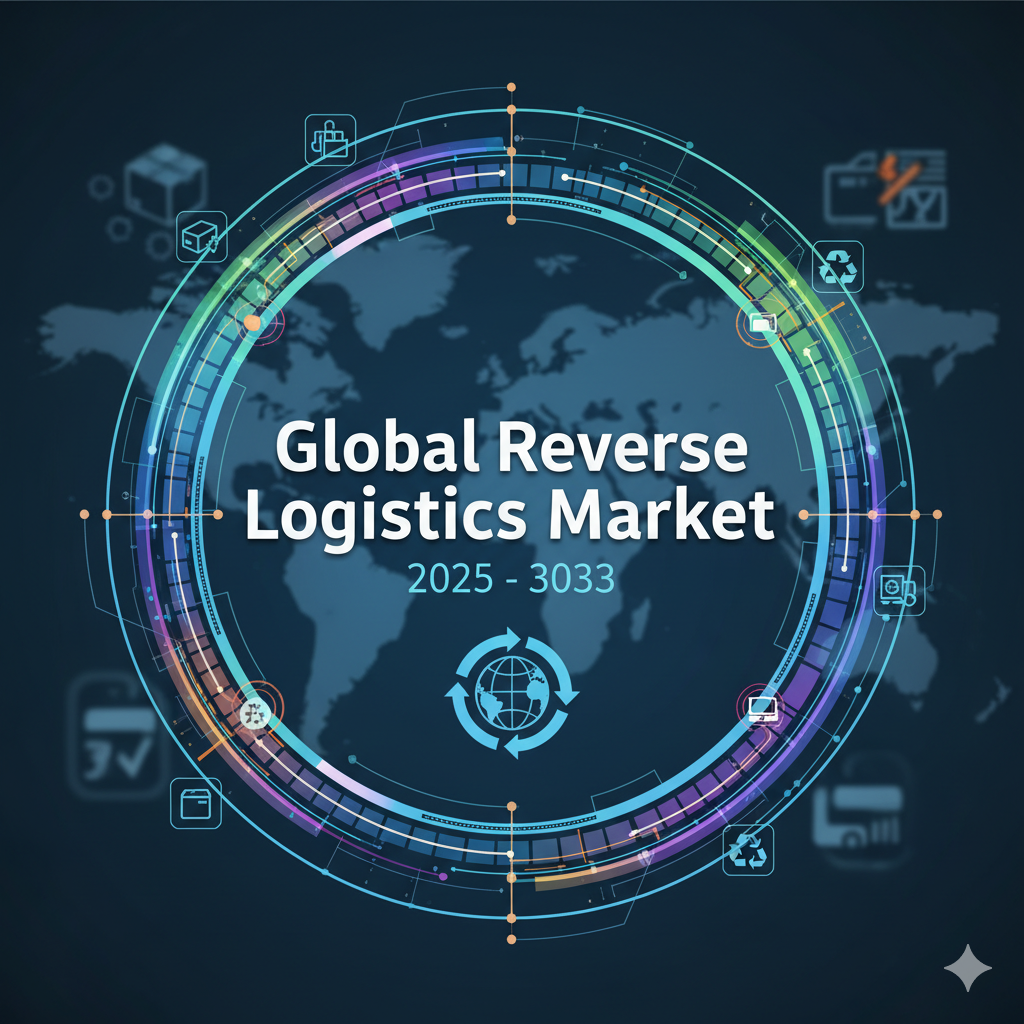The global reverse logistics market is experiencing robust growth, driven by increasing e-commerce activities, stringent environmental regulations, and the rising need for efficient product returns and recycling processes. Businesses are adopting reverse logistics solutions to minimize waste, reduce costs, and enhance sustainability. According to recent projections, the market is expected to grow at a CAGR of 4.8% from 2025 to 2033, reaching a substantial valuation. Key factors fuelling this expansion include technological advancements, the circular economy trend, and the growing emphasis on supply chain optimization.
Study Assumption Years
- Base Year: 2024
- Historical Year: 2019-2024
- Forecast Year: 2025-2033
Reverse Logistics Market Key Takeaways
- The market size was valued at USD 678.8 Billion in 2024 and is projected to reach USD 1,031.6 Billion by 2033, growing at a CAGR of 4.8%.
- E-commerce expansion is a major driver, increasing demand for efficient return and exchange processes.
- Sustainability initiatives and government regulations are accelerating reverse logistics adoption.
- North America dominates due to advanced supply chain infrastructure and high e-commerce penetration.
- The automotive and electronics sectors lead in reverse logistics due to high product return rates.
- AI and automation are transforming reverse logistics with smarter sorting and tracking systems.
- Asia-Pacific is the fastest-growing region, driven by booming e-commerce and manufacturing sectors.
Market Growth Factors
- Rising E-commerce Returns Fuel Reverse Logistics Market Growth
The rise of online shopping has brought about a significant increase in product returns, leading to a growing demand for efficient reverse logistics systems. E-commerce giants depend on reverse supply chains to process returned items, refurbish them, and recycle packaging materials. Reusable materials like paper, plastics, and electronic components from these returns are either repurposed or recycled. This not only helps reduce waste but also enhances sustainability while lowering operational costs. As consumers’ expectations for quick and free returns continue to grow, companies are heavily investing in advanced tracking, automation, and route optimization technologies, driving the global reverse logistics market ahead.
- Technological Advancements in Reverse Supply Chain Management
The integration of digital technologies like IoT, AI, and blockchain is truly changing the game for reverse logistics operations. These innovations offer real-time visibility, streamline inventory tracking, and enhance route optimization, leading to greater efficiency and reduced processing times. AI-driven systems can even forecast return volumes and optimize the flow of recycling materials. Automation in sorting, grading, and refurbishing not only improves cost-effectiveness but also supports sustainability efforts. This shift in technology is enabling manufacturers and retailers to achieve faster turnaround times, which boosts profitability and encourages the global adoption of reverse logistics.
- Rising Adoption in Automotive and Electronics Industries
The automotive and electronics industries are leading the way in using reverse logistics to reclaim valuable components. When vehicles, batteries, and devices are returned, they become essential materials for refurbishment and recycling. Reverse logistics streamlines the management of warranty claims, product recalls, and recycling at the end of a product’s life. It also plays a crucial role in recovering rare materials like lithium, aluminum, and copper, which helps reduce our reliance on new resources. This trend not only supports cost savings but also promotes sustainability, making reverse logistics a vital component of the circular economy in these sectors.
Request for a sample copy of this report:
https://www.imarcgroup.com/reverse-logistics-market/requestsample
Market Segmentation
Breakup by Return Type:
- Recalls – Involves retrieving defective or unsafe products from consumers.
- Commercial Returns – Covers product returns due to customer dissatisfaction or order errors.
- Repairable Returns – Includes products sent back for repairs under warranty.
- End-of-Use Returns – Pertains to products returned after their usable lifecycle.
- End-of-Life Returns – Focuses on recycling or disposing of products that can no longer be used.
Breakup by Service:
- Transportation – Covers the movement of returned goods.
- Reselling – Involves refurbishing and reselling returned items.
- Replacement Management – Handles product exchanges efficiently.
- Refund Management Authorization – Streamlines refund processing.
- Others – Includes additional services like warehousing and disposal.
Breakup by End User:
- E-Commerce – Leading segment due to high return rates.
- Automotive – Focuses on parts recycling and recalls.
- Pharmaceutical – Manages expired or recalled drugs.
- Consumer Electronics – High return rates due to defects or upgrades.
- Retail – Handles merchandise returns and exchanges.
- Others – Includes industries like aerospace and construction.
Breakup by Region:
- North America (United States, Canada)
- Asia Pacific (China, Japan, India, South Korea, Australia, Indonesia, Others)
- Europe (Germany, France, United Kingdom, Italy, Spain, Russia, Others)
- Latin America (Brazil, Mexico, Others)
- Middle East and Africa
Regional Insights
North America is leading the way in the reverse logistics market. This is due to its advanced supply chain systems, a rapidly growing e-commerce industry, and strict environmental laws. The U.S. is in the forefront, supported by its strong retail and technology sectors, while Canada is making progress in sustainable logistics. The region is increasing efficiency and strengthening its role as the largest revenue generator in the global reverse logistics industry by focusing on automation and AI-powered solutions.
Recent Developments & News
Recently, the reverse logistics market has seen significant advancements. AI-driven tools now predict returns, blockchain technology enables transparent tracking, and robots are increasingly handling sorting tasks in facilities.
Companies are collaborating with third-party logistics (3PL) providers to improve their return processes. Additionally, there is a rising emphasis on sustainable packaging and zero-waste initiatives aligning with global environmental goals.
Innovations such as smart labels and automated refund systems have further streamlined reverse logistics operations, making them more efficient than before.
Key Players
C.H. Robinson Worldwide Inc., Core Logistic Private Limited, Deutsche Post AG, Fedex Corporation, Happy Returns Inc. (PayPal Holdings Inc.), Kintetsu World Express Inc. (Kintetsu Group Holdings), Optoro Inc., Pitney Bowes Inc., Reverse Logistics Group, Safexpress Pvt Ltd, United Parcel Service Inc., Yusen Logistics Co. Ltd. (Nippon Ysen Kabushiki Kaisha), etc.
Ask Analyst for Customization:
https://www.imarcgroup.com/request?type=report&id=4976&flag=C
If you require any specific information that is not covered currently within the scope of the report, we will provide the same as a part of the customization.
About Us:
IMARC Group is a global management consulting firm that helps the world’s most ambitious changemakers to create a lasting impact. The company provides a comprehensive suite of market entry and expansion services. IMARC offerings include a thorough market assessment, feasibility studies, company incorporation assistance, factory setup support, regulatory approvals and licensing navigation, branding, marketing and sales strategies, competitive landscape, and benchmarking analyses, pricing and cost research, and procurement research.
Contact Us:
IMARC Group
134 N 4th St. Brooklyn, NY 11249, USA
Email: sales@imarcgroup.com
Tel No:(D) +91 120 433 0800
United States: (+1-201971-6302)





